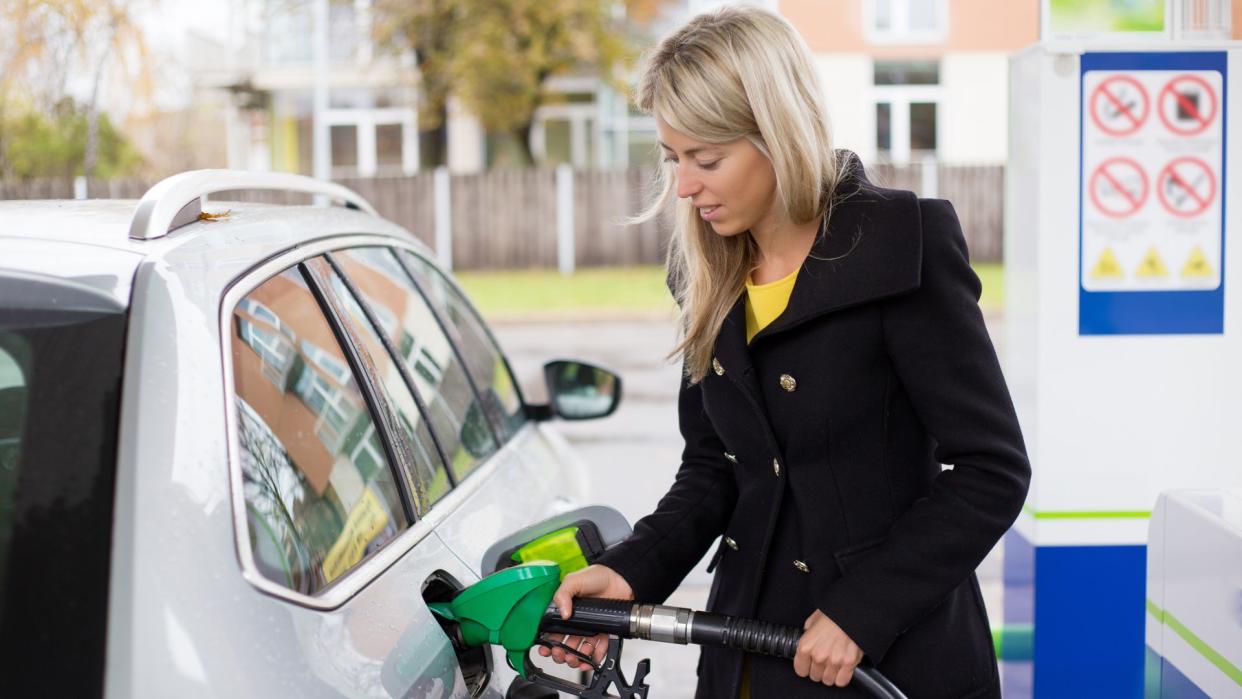Average Cost of Gas Per Month: How Much Should You Be Spending?

Americans, who had been feeling some relief at the gas pump, are being hit again by rising prices. Indeed, the latest consumer price index (CPI) data, released March 12, showed that gas prices were up 3.8% in February.
Check Out: 10 Expenses Most Likely To Drain Your Checking Account Each Month
Read Next: 5 Genius Things All Wealthy People Do With Their Money
Yet, they are also down 3.9% for the year — and while this jump is hurting consumers’ wallets, it’s a far cry from the 58.1% YoY increase of November 2021, according to the data.
According to AAA, the national average for the price of gas as of March 13 is at $3.396. Some of the states with the highest prices include California, at $4,877; Hawaii, at $$4.71; Washington, at $4.222; and Nevada, at $4.138.
On the other hand, you’ll find cheaper gas prices in Mississippi, at $2.955; Texas, at $3.018; Louisiana, at $3.042; Colorado, at $3.047; and Tennessee, at $3.064.
Learn More: Average Cost of Groceries Per Month — How Much Should You Be Spending?
Drivers Behind Recent Gas Price Increases
Experts said there is a combination of drivers pushing the prices higher — including obstructions to the delivery of oil, owing to the Houthi attacks along the Red Sea, per Peter C. Earle, senior economist with the American Institute for Economic Research.
Earle noted that drought conditions which have slowed passage through the Panama Canal, sanctions on Russian oil, the March 3rd vote among OPEC+ members to extend output cuts, and rising prices for naphtha — which is necessary for octane boosters — are contributing to falling supply as well.
“We’re still a long way from gasoline prices where the U.S. government would consider releases from the strategic petroleum reserve, but the kicker is that America’s reserves are low. There’s less that could be done today than a few years ago,” added Earle.
So, How Much Should You Spend on Gas as Part of your Budget?
According to Moody’s Analytics energy economist Chris Lafakis, the average household should spend between 3-5% of their income on gasoline purchases.
“Anything higher than that is above average. Oil prices are the primary determinant of gas prices, accounting for 66% of the fluctuation in gasoline costs,” said Lafakis, adding that the other third comes from refining costs, distribution costs and taxes.
Another way of determining how much you should spend on gas — and an “answer that sounds impudent” — is that a person should spend at least as much on gas as they need to keep earning money, said Earle.
“Whatever it costs to get to work, unless more affordable alternatives are available, is what one should spend,” he said.
Earle explained that there was a rule of thumb, which followed a 20-4-10 numerical rubric. Spend 20% on a down payment for a vehicle, finance the vehicle over four years, and don’t let expenses — ranging from car repairs and insurance to gasoline — exceed 10% of your gross monthly income (GMI).
“Given huge changes in auto insurance and the last few years of inflation, the first two (20 and 4) are likely not realistic,” he added. “But a 10% (GMI) guideline on total auto expenses including gasoline could be constructive in planning.”
The Future of Gas Prices in 2024
As for where prices will go from here, Lafakis said that Moody’s calls for oil prices to steady at near their current levels over the next few months.
“Gasoline prices will rise, however, as refining maintenance and the added cost of summer blend gasoline push up prices at the pump,” he added.
More From GOBankingRates
I'm a Shopping Expert: 9 Items I'd Never Put in My Grocery Cart
Avoid This Simple Banking Mistake That Could Cost You Over $1,000
6 Things You Should Never Do With Your Tax Refund (Do This Instead)
This article originally appeared on GOBankingRates.com: Average Cost of Gas Per Month: How Much Should You Be Spending?
